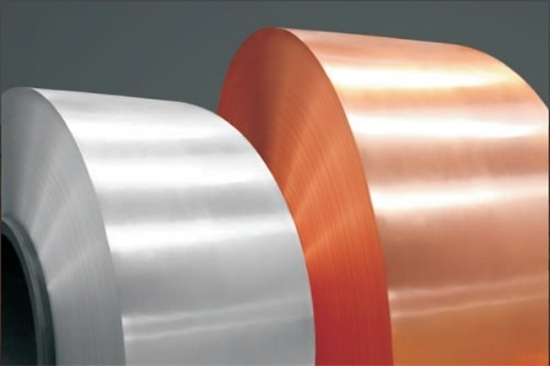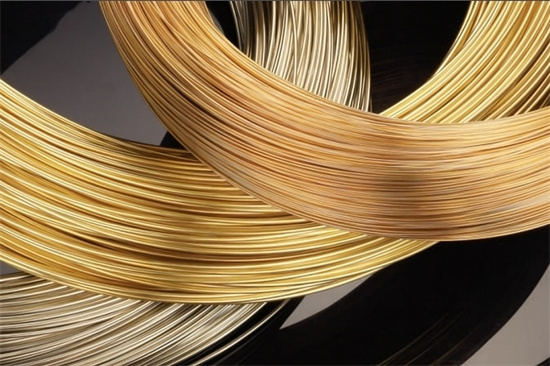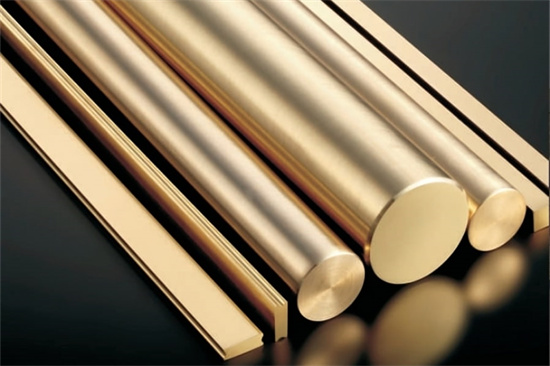


銅-亜鉛系黄銅の完全ガイド:優れた特性と用途
低いMOQ
さまざまなニーズに対応するため、最低注文数量を少なくしています。
OEM & ODM
顧客独自のニーズに応えるため、カスタマイズされた製品とデザインサービスを提供する。
十分な在庫
迅速な注文処理と、信頼できる効率的なサービスの提供。
顧客満足度
顧客満足を核とした高品質の製品を提供する。
この記事を共有する
目次
真鍮は、製造とエンジニアリングの世界で出会うことのできる最も汎用性の高い合金のひとつです。具体的には、銅(Cu)と亜鉛(Zn)の合金であるCu-Zn黄銅は、何世紀にもわたって基礎材料として使われてきました。金色に輝く外観から優れた機械的特性まで、Cu-Zn系黄銅は以下のような幅広い産業で使用されています。 配管工事 楽器に至るまで。しかし、この合金の何がそれほど特別なのだろうか?なぜエンジニアやメーカーはCu-Zn黄銅をプロジェクトに採用し続けるのだろうか?
この究極のガイドブックでは、新しい製品の材料を選択する場合でも、単にその特性について興味がある場合でも、Cu-Zn黄銅について知っておく必要があるすべてのことを深く掘り下げて説明します。基礎知識、種類、用途、そしてこの適応性の高い合金を最大限に活用するためのヒントをご紹介します。
銅-亜鉛黄銅の概要
Cu-Znブラスとは?
その核心は 銅-亜鉛黄銅 の混合物である。 銅 そして ジンク通常 銅含有量 から 55%〜95%そして ジンク が残りを占める。銅と亜鉛の正確な比率は、素材の特性を大きく変化させ、真鍮を以下のようにする。 より可鍛性, より強いあるいは 耐食性向上 用途によって異なる。
とは異なり ブロンズ (銅と錫を主成分とする)Cu-Zn黄銅は、その優れた特性で知られている。 黄金色そのため、装飾的な用途には魅力的な選択肢となる。 機能用途.
銅-亜鉛黄銅の主要特性
- 耐食性:純銅ほど耐食性は高くないものの、真鍮は大気条件下でも、特に変色しにくいという点でよく持ちこたえます。
- 可鍛性:亜鉛が含まれているため、真鍮は銅よりも可鍛性に富み、複雑な形状に成形しやすい。
- 良い強さ:亜鉛の含有量によって、黄銅は驚異的な引張強度と降伏強度を示し、構造用途に適している。
- 電気伝導率:真鍮は、銅の優れた電気伝導性の一部を保持していますが、純銅よりは伝導性が劣ります。
- 作業性:Cu-Zn系黄銅は、次のような方法で簡単に加工できる。 鍛造, キャスティングあるいは 加工製造業で愛用されている。
Cu-Zn黄銅の種類、組成および特性
の特性 銅-亜鉛黄銅 は、銅と亜鉛の比率を調整することで微調整でき、場合によっては、以下のような他の元素を微量加えることもできる。 リード, 錫あるいは アルミニウム.各タイプの黄銅は、設計要件に応じて特定の利点があります。
銅-亜鉛黄銅の種類と組成
| 真鍮タイプ | 銅(Cu)含有量 | 亜鉛(Zn)含有量 | 追加要素 | プライマリー・プロパティ |
|---|---|---|---|---|
| アルファ・ブラス | 65-90% | 10-35% | – | 耐食性に優れ、冷間加工性に優れ、室温では延性がある。 |
| アルファ・ベータ・ブラス | 55-65% | 35-45% | – | アルファ黄銅より強靭で、熱間加工が可能。 |
| ベータ・ブラス | 45-55% | 45-55% | – | 非常に強く硬く、延性に乏しく、一般に鋳造や鍛造に用いられる。 |
| マンツ・メタル | 60% | 40% | – | 高強度、海洋用途に優れ、耐食性に優れる。 |
| 鉛入りブラス | 55-65% | 35-45% | リード(3%まで) | 被削性が向上し、高精度部品に使用されるが、耐食性はやや劣る。 |
| 錫ブラス | 60-70% | 30-40% | 錫(2%まで) | 標準的な黄銅よりも耐食性が高く、海洋や高湿度環境で使用される。 |
| アルミニウム 真鍮 | 75-85% | 15-25% | アルミニウム(2%まで) | 優れた耐食性、特に海水中での耐食性に優れ、標準的な黄銅よりも強度が高い。 |
アルファ・ブラス
アルファ黄銅は非常に延性があり 仕事がしやすい に最適である。 冷間加工 のようなプロセスです。 ローリング または 足踏み.でよく使われている。 装飾品, ジュエリーそして 楽器.
ベータ・ブラス
その一方で ベータブラス はるかに 難しい そして より強い延性は劣るが。そのため、以下のような用途に最適である。 強さ のような可鍛性よりも重要である。 歯車 そして バルブ.
Cu-Zn黄銅の機械的および物理的特性
Cu-Zn黄銅の機械的特性は、その組成によって大きく異なりますが、ここでは、最も一般的なタイプのいくつかに期待できる一般的な内訳を示します。
| プロパティ | アルファ・ブラス | アルファ・ベータ・ブラス | ベータ・ブラス | 鉛入りブラス | アルミニウム 真鍮 |
|---|---|---|---|---|---|
| 引張強さ (MPa) | 250-400 | 350-500 | 500-650 | 300-450 | 500-600 |
| 降伏強度 (MPa) | 100-200 | 150-300 | 400-550 | 150-250 | 400-550 |
| 硬度(HB) | 50-100 | 100-150 | 150-200 | 80-120 | 150-200 |
| 破断伸度(%) | 20-40% | 10-20% | 5-10% | 15-25% | 10-20% |
| 密度 (g/cm³) | 8.4-8.7 | 8.4-8.7 | 8.4-8.7 | 8.5-8.75 | 8.5-8.75 |
| 導電率(% IACS) | 28-40% | 20-30% | 15-20% | 20-30% | 15-25% |
銅-亜鉛黄銅の用途
Cu-Zn黄銅はその特性で知られている。 多用途.その用途は、その特性から業界をまたがる。 作業性, 耐食性そして 美的アピール.この合金の最も一般的な用途をいくつか挙げてみよう。
銅-亜鉛黄銅の一般的な用途
| 産業 | 申し込み |
|---|---|
| 配管工事 | 加工性が良く、水による腐食に強いため、継手、バルブ、蛇口など。 |
| 電気工学 | 導電性に優れ、加工が容易なため、電気コネクターや端子に使用される。 |
| 楽器 | トランペット、トロンボーン、サクソフォーンなどの金管楽器は、その音響特性と美観のためである。 |
| 自動車 | 熱伝導性と耐食性に優れているため、ラジエーター、熱交換器、その他の部品。 |
| 装飾美術 | 黄金の外観と成形のしやすさから、宝飾品、建築用金具、彫刻など。 |
| 海洋工学 | 塩水腐食に強いため、プロペラ、ファスナー、その他の船舶用金具。 |
| コイン | 耐久性とコストパフォーマンスに優れ、変色しにくいことからコインに使用される。 |
配管および電気アプリケーション
Cu-Zn系黄銅の最もよく知られた用途のひとつは、次のようなものだろう。 配管工事.真鍮製の器具、バルブ 蛇口 真鍮は耐久性に優れているため、住宅や商業施設によく使われている。 水腐食 を提供しながら 耐久性 そして 信頼性.
で 電気アプリケーション真鍮はその特性から珍重されている。 導電率 そして 加工性.純粋な銅ほど導電性は高くないものの、それでも真鍮は次のような用途に最適です。 電気コネクタ そして ターミナル特に、以下のような環境では。 耐食性 が鍵だ。
楽器
金管楽器といえば、次のような楽器が思い浮かぶ。 トランペット そして トロンボーン を思い浮かべるだろう。真鍮は楽器製作において、その 音響特性.を形成する能力を持つ。 複雑な形状 を保持しながら 強さ そして 振動の質 には理想的だ。 管楽器.
銅-亜鉛黄銅の仕様、サイズ、規格
Cu-Zn系黄銅を調達する場合、以下の点を理解することが重要である。 仕様書, サイズそして 業界標準 この素材を管理する購入するものが 真鍮原木 または カスタムパーツを知っている。 成績 そして 規格 は、あなたのプロジェクトに適した材料を確実に入手します。
Cu-Zn黄銅の一般的な仕様、サイズ、業界標準
| 形状 | 一般的なサイズ | 業界標準 |
|---|---|---|
| バー/ロッド | 直径:6mm~300mm | ASMB16、EN 12164、ISO 426-2 |
| プレート/シート | 厚さ:0.5mm~100mm | ASTM B36、BS 2870、EN 1652 |
| ワイヤー | 直径:0.1mm~10mm | ASTM B206、EN 12166 |
| チューブ/パイプ | 外径: 6 mm~500 mm | アストレムB135、BS 2871、EN 12449 |
| 鋳物 | デザインに基づいたカスタムサイズ | ASTM B584, EN 1982 |
真鍮は多くの場合、次のような方法で製造される。 ASTM, ディンそして EN規格までカバーする。 化学成分 への 機械的性質.例えば、 ASTM B16 の要件を規定している。 快削黄銅棒一方 EN 12164 カバー 機械加工用黄銅棒.
銅-亜鉛黄銅のサプライヤーと価格
銅-亜鉛黄銅の価格は、以下のような要因によって変動する。 亜鉛含有量, フォーム, サイズそして 注文数量.さらに 市場価値 の 銅 そして ジンク は、全体的なコストを決定する上で重要な役割を果たす。
銅-亜鉛黄銅の主要サプライヤーと価格見積もり
| サプライヤー | 所在地 | kgあたりの価格 | 最小注文数量 |
|---|---|---|---|
| 金属スーパーマーケット | アメリカ, グローバル | $6 – $12 | 10キロ |
| 上海金属有限公司 | 中国 | $5 – $10 | 50キロ |
| アロ・メタルズ | アメリカ | $7 – $13 | カスタムサイズ |
| KMEドイツ社 | ドイツ | $6 – $11 | カスタムオーダー |
| アビバ・メタルズ | アメリカ | $7 – $14 | 20キロ |
Cu-Zn系黄銅の平均価格は以下の通りである。 1kgあたり$5~$14による。 タイプ そして フォーム. バー, ロッドそして シート は下位に位置する傾向がある。 カスタム鋳物 または 高精度部品 プレミア価格がつくこともある。
銅-亜鉛黄銅の長所と短所を比較する
他の素材と同様、Cu-Zn系黄銅にも特性がある。 利点 そして 制限.などの分野で輝きを放っている。 作業性 そして 耐食性しかし、以下のようなトレードオフを考慮する必要がある。 コスト そして 導電率 他の金属に比べて。
銅-亜鉛黄銅の利点
| メリット | 説明 |
|---|---|
| 耐食性 | 真鍮は変色や腐食に強く、特に湿気の多い場所や海洋環境での使用に適しています。 |
| 作業性 | 機械加工、鋳造、複雑な形状への成形が容易で、製造に最適。 |
| 美的アピール | 鮮やかな金色の外観で、装飾用として人気がある。 |
| 可鍛性 | 亜鉛は展延性を高め、合金の冷間加工を可能にする。 |
| 耐久性 | 真鍮は、特に磨耗の激しい用途で優れた耐久性を発揮します。 |
銅-亜鉛黄銅の欠点
| デメリット | 説明 |
|---|---|
| 銅より低い導電率 | 真鍮は純銅よりも電気伝導率が低いため、電気的用途によっては使用が制限される。 |
| 青銅より耐食性に劣る | 真鍮は腐食には強いが、特に海水環境では青銅ほどの耐食性はない。 |
| 比較的高価 | 真鍮は、等級や形状にもよりますが、アルミニウムやスチールなどの他の金属よりも高価な場合があります。 |
銅-亜鉛黄銅に関するFAQ
| 質問 | 答え |
|---|---|
| Cu-Zn黄銅は何に使われるのか? | Cu-Zn系黄銅は、配管、電気コネクター、楽器など、さまざまな用途に使用されている。 |
| Cu-Znブラスの価格は? | Cu-Zn黄銅の価格は、種類や形状にもよるが、通常1kgあたり$5~$14である。 |
| 真鍮は耐食性に優れていますか? | はい、真鍮は耐食性に優れており、特に湿気の多い環境では青銅ほどではありませんが、耐食性に優れています。 |
| 真鍮は溶接できますか? | はい、真鍮は溶接できますが、次のような特殊な技術が必要です。 TIG溶接 ひび割れや弱化を防ぐため。 |
| 真鍮と青銅の違いは何ですか? | 真鍮は銅と亜鉛の合金で、青銅は銅と錫の合金です。真鍮はより可鍛性で、青銅は一般的に耐食性に優れています。 |
| 真鍮はなぜ楽器に使われるのか? | 真鍮が楽器に使われるのは、その音響特性、成形のしやすさ、魅力的な外観のためである。 |
| Cu-Zn黄銅はリサイクルできますか? | そう、真鍮はリサイクル性が高く、リサイクルしても真鍮本来の性質はほとんど損なわれない。 |
結論
銅-亜鉛黄銅 は 極めて汎用性の高い合金 バランス 強さ, 作業性そして 外観.工作するにしても 配管部品, 楽器あるいは マリンハードウェアこの合金は、幅広い用途で際立つユニークな特性を兼ね備えている。最も優れた合金ではないかもしれないが 耐食性 または 最安 のオプションが市場に出回っている。 美的アピール そして 作業性 機能的、装飾的な用途で愛用されている。
を理解することである。 タイプ, プロパティそして アプリケーション Cu-Zn系黄銅の特性を知ることで、次のプロジェクトでこの素材をどのように使用するか、十分な情報を得た上で決定することができます。次のプロジェクトで トランペット またはエンジニアリング マリンプロペラこの金色の合金があなたをカバーする。
最新価格
Met3DPについて
製品カテゴリー
ホットセール

3Dプリンティングと積層造形用金属粉末








